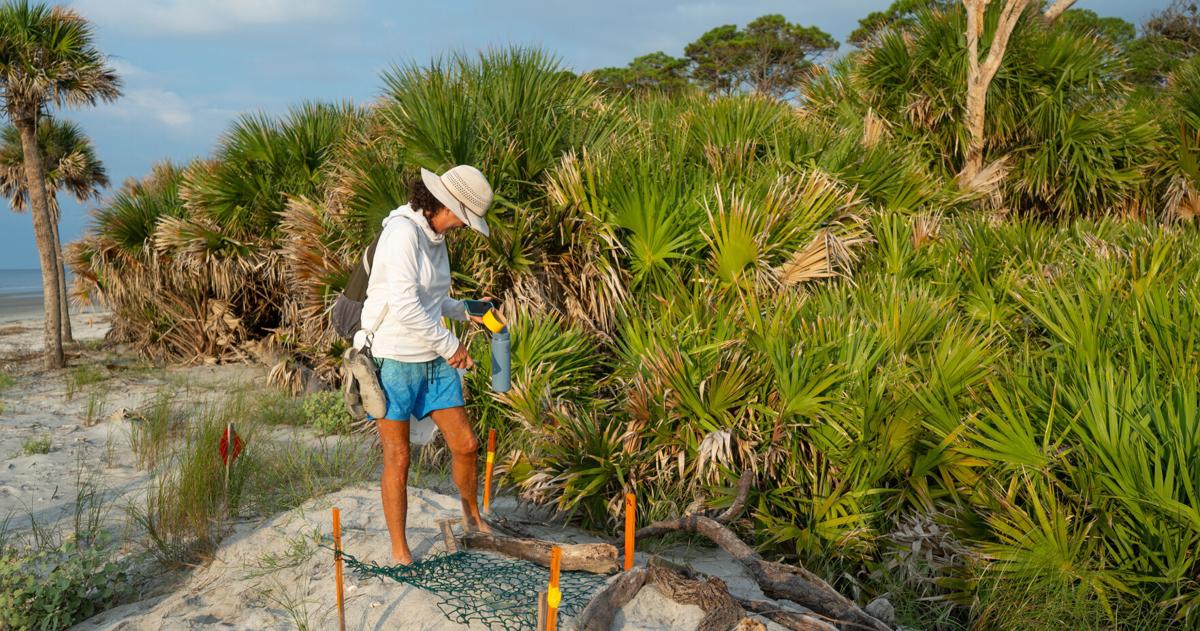“We removed copious amounts of mud, crabs, sea pork, leeches, barnacles, skeleton shrimp, and dead shell when she arrived early this morning, revealing wounds covered with fibronecrotic membrane, a scab-like tissue,” read the notes, in part.
With a slow metabolism, sea turtles require a lot of time to heal. Accordingly, Mama Pritchard remained in the care of the aquarium for almost two years. She was, by all accounts, a stand-out patient, winning the hearts of her caregivers and the public who visited her.
“She was quite the ambassador for sea turtles everywhere. A lot of people love sea turtles because of Mama Pritchard,” Ritchie said.
A hatchling loggerhead turtle, who was later linked through genetic testing to Mama Pritchard, is examined by a student from the University of South Carolina Beaufort, July 15, 2025. Mama Pritchard has nest on the island about every two years since 2002. SCDNR Permit MTP507.
University of South Carolina Beaufort/Provided
Tipping the scales at 368 pounds by the end of her rehabilitation, Mama Pritchard was the largest sea turtle ever released by the South Carolina Aquarium. She returned to the sea with great fanfare on April 17, 2010, from Isle of Palms County Park. For three years, she remained undetected. Resurfacing in 2013, Mama Pritchard found her way back to her namesake beach, nesting there five times. Two years later, she repeated the effort.
Sea turtle survival rates are astronomically low. Estimates are that somewhere between one in a 1,000 to one in 10,000 hatchlings survive to adulthood. Untold numbers of turtles never make it out of the nest, and Mama Pritchard’s nests were no exception. Not a single hatchling emerged from her nests during the first two seasons following her rehabilitation.
“Those nests in 2013 and 2015 were either depredated by raccoons or washed over by the tide,” Pate said. “By 2017, the volunteer team was utilizing metal screens to protect nests from mammalian predators and or relocating nests to higher ground as needed, so the later years of nesting have some productivity.”
Mama Pritchard’s first three nests in 2017 produced more than 250 hatchlings, but Tropical Storm Irma flooded the last two nests, destroying all of the eggs. Since then, the number of surviving hatchlings each season has been on the rise.
